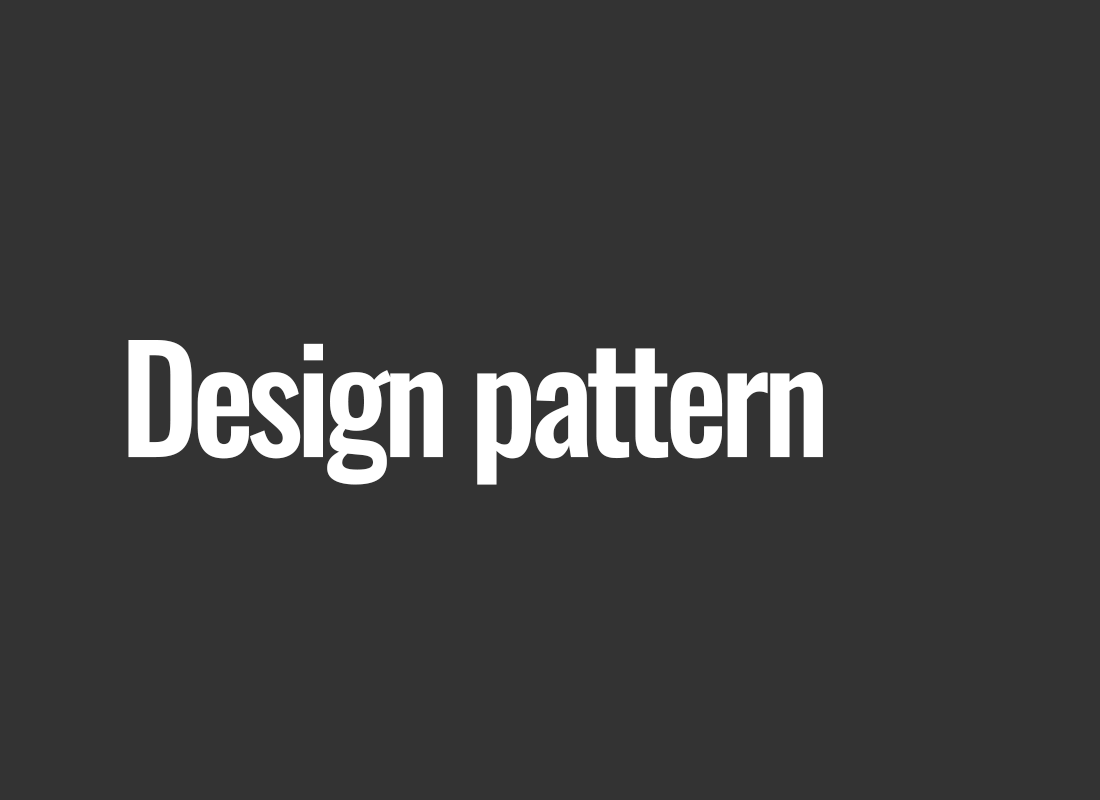Design pattern
In today's dynamic world, where technologies are advancing rapidly, designing effective and innovative solutions becomes a challenge. In this fluid reality, Design Patterns stand out as a key element contributing to the creation of cohesive, efficient, and intuitive user interfaces (UI), e-commerce strategies, marketing actions, as well as the optimization of business processes and the development of information systems. The value of this approach lies not only in eliminating repetitiveness in design but also in enabling designers and developers to leverage already proven, effective solutions, speeding up the creation processes and improving the quality of final products.
User interface design is not just about aesthetics but primarily about functionality and usability. In this context, Design Patterns become a crucial tool, allowing designers to create consistent interaction patterns that are intuitive for users. By defining design patterns, designers can focus on solutions that have already been tested and proven effective, rather than reinventing the wheel.
In the e-commerce field, where competition is fierce, and customer expectations are constantly rising, Design Patterns play a crucial role in creating flexible and responsive strategies. Proper application of design patterns allows for quick adaptation to changing market conditions, dynamic adjustment to customer needs, and optimization of the purchasing process. This not only ensures competitiveness but also builds positive shopping experiences, which are key to building customer loyalty.
Practical application of Design Patterns in various fields
UI designers, software engineers, marketers, and entrepreneurs from various fields have been using Design Patterns as a key tool for years, accelerating design processes, optimizing product functionality, and increasing usability. Let's now look at some specific examples of the application of design patterns in practice.
Effective Design Patterns in UX
The Observer pattern is one of the most important tools in UI design. It allows monitoring and responding to changes in the object's state, especially in analyzing user behavior on websites. For example, if an e-commerce website employs this pattern, it can track which products attract the most attention from customers. This enables the designer to adjust the layout, improving user experiences and increasing conversion.
Flexible strategies in e-commerce
The Strategy pattern is invaluable in e-commerce, where dynamic adaptation to changing market conditions is crucial. For instance, an online store employing the strategy pattern in pricing can easily modify its pricing policy depending on circumstances. During a sale, prices can be adjusted to attract more customers, while in normal periods, the pricing strategy may focus on maintaining profits.
Personalization in marketing
In the field of marketing, design patterns are particularly applicable to content and message personalization. The Decorator pattern allows dynamically adding new functionalities to existing objects, which can be used to customize content based on individual customer preferences. For example, a marketing system can use the Decorator pattern to personalize offers, taking into account previous purchases and customer preferences.
Optimization of business processes
In business, Design Patterns can be applied to optimize operational processes. The Singleton pattern, ensuring the existence of only one instance of a given object, can be used to manage shared resources. For example, having a single instance of a CRM system in a company allows for uniform customer management, eliminating the risk of data inconsistencies between different departments.
Efficient structure in computer science
In computer science, Design Patterns not only improve code quality but also influence the structure of systems. For example, the Abstract Factory pattern allows the creation of families of related objects without specifying their concrete classes. This facilitates easier expansion and development of the system while maintaining consistency.
Iterative design using Design Patterns
An important aspect of applying Design Patterns is their role in the iterative design process. Using these patterns allows designers and developers to quickly adapt to changes in requirements, identify issues at early stages, and implement corrections efficiently. This makes the design process more flexible and adapted to dynamic market realities.
Effectiveness in managing the creative process
In the context of managing the creative process, Design Patterns play a crucial role. Applying proven design patterns enables effective management of the project team, allowing simultaneous work on different project elements. For example, using the Prototype pattern, one can work simultaneously on different versions of the product, speeding up the iterative process.
Global perspectives through design patterns
In the context of global perspectives, Design Patterns become a universal language that transcends language and cultural barriers. Applying these patterns allows for effective communication between different project teams worldwide. For instance, a unified implementation of design patterns in a mobile application enables teams from different continents to collaborate on development, regardless of local preferences and standards.
Maintaining high-quality code
One of the key aspects determining project effectiveness is code quality. Design Patterns contribute to maintaining clean, organized, and easily understandable code. Design patterns, such as Singleton or Abstract Factory, promote good programming practices and facilitate the maintenance and development of information systems in the long run.
These examples clearly demonstrate how Design Patterns become an integral part of the design process on various fronts. Introducing these proven design patterns allows organizations not only to shorten product development time but also to increase their quality and adapt to changing market conditions.
Summary
In conclusion, Design Patterns are not just a design theory but a practical tool that revolutionizes creative processes in various fields. The effectiveness of applying design patterns is not limited to short-term benefits but translates into the long-term success of projects. Flexibility, ease of maintenance, increased innovation, global interoperability, and high code quality are just some of the advantages resulting from consistent application of Design Patterns. For organizations aspiring to leadership in their industries, understanding, accepting, and properly applying these design patterns become key elements of success strategies. In today's dynamic business environment, where the pace of change is constant, Design Patterns provide the foundation on which innovative and competitive solutions can be built.




